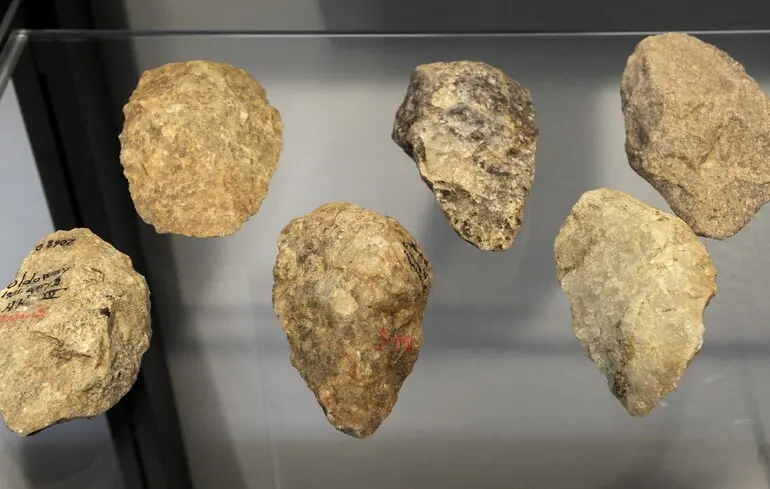Paleolithic Ingenuity: How Our Ancestors Planned Their Stone Tool Journeys

Humans of the Stone Age demonstrated remarkable sophistication in selecting materials for crafting tools, aligning with some of humanity’s greatest achievements.
Archaeological evidence shows that nearly three million years ago, our ancient predecessors were capable not only of making simple stone tools but also of strategically planning their raw material procurement.
They traveled considerable distances to find suitable stones, indicating advanced behavioral and cognitive development beyond previous assumptions.Around 2.6 million years ago, the technique of detaching sharp flakes from stones emerged, serving as knives to cut the meat of large animals.
Discoveries at the Nyayan’ga site in Kenya confirm that early hunters hunted hippos near freshwater sources.
However, recent research published in Science Advances reveals that not all stone varieties were suitable for producing tools with the necessary sharpness to pierce the thick hides of these giants.
Co-author Thomas Plummer from Queens College of New York University emphasizes: “The tough hide of a hippopotamus requires particular sharp edges, demanding specific stone materials.”Findings of durable quartzite tools imply that early humans didn’t just randomly make tools but carefully planned their hunts and resource collection.
Evidence suggests that they knew where to source raw materials and transported stones over distances up to 13 kilometers.
Such behavior indicates a form of mental mapping—an early sign of complex planning and cognitive skills.Previous hypotheses suggested that stone collection was limited to areas within a mile from habitation sites.
Yet, new evidence proves that our ancestors anticipated and prepared — revealing one of the earliest examples of such behavior in archaeology.
These insights, described by paleoanthropologist Erik Delsan from the American Museum of Natural History, illuminate an essential chapter in cognitive evolution.Moreover, discoveries in Latvia’s Scankalne settlement reveal that humans occupied this area during the Bronze Age and Neolithic period, far earlier than previously thought.
Artifacts like slate pendants and flint tools dated to 3000-1800 BCE challenge existing notions of the timeline of human settlement and technological development in the Baltic region.

